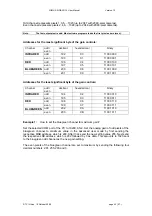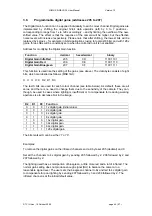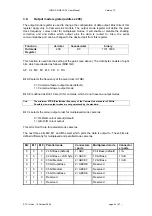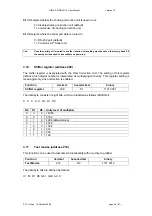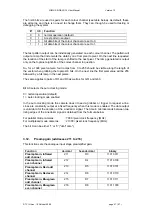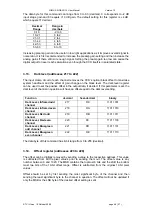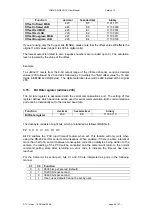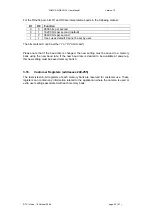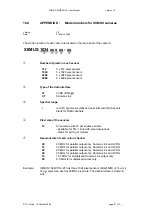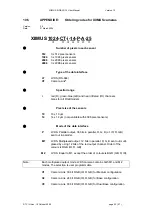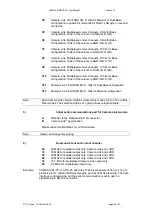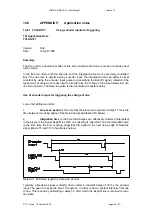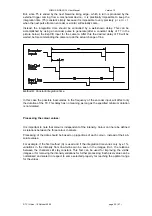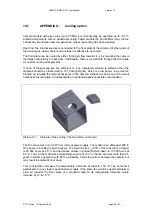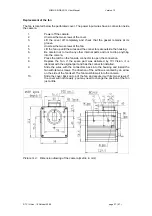
XIIMUS R-GB-IR CL User Manual. Version 1.2
10.7
APPENDIX G: Cooling option
Camera models with pixel rates up to 25 MHz per channel may be operated up to +35 °C
ambient temperature with no additional cooling. Faster models (33 and 40 MHz) may run too
hot already at or below room temperatures, unless the cooling has been assisted.
Heat from the internal sources is conducted to the front plate of the camera. All other parts of
the housing are clearly cooler and are thus not effective to be cooled.
The front plate can be cooled by either forcing air flow towards it or by mounting the camera
thermally conductively to heat sinks. Additionally, there is a small hole through the front plate
for custom cooling arrangements.
If none of these measures are sufficient or if an integrated solution is preferred then the
cameras should be ordered with a TVI Cooling Option, which is a low power, low noise fan
blowing air towards the internal hot spots of the camera. Exhaust air flows out of the small
holes near the rear plate. All optical parts are protected against possible contamination.
Picture G.1.: Principle of the cooling. The fan itself is not shown.
The fan consumes only 0.7 W from internal power supply. The model is an ebmpapst 405 F.
One spare is included in each delivery. The Service Life L
10
(90% of the fans will run longer)
is 45 000 hours at 20 °C and decreases almost in a linear fashion down to 15 000 hours at
60 °C. Thus, at the maximum ambient temperature of +50 °C, the fan will work more than 2.5
years in full time operation with 90 % probability. A fan stop will not damage the camera, but
may result in automatic shut down.
This construction increases the temperature tolerance at least to +50 °C. The same limit
applies also to any slower speed camera models. If the same fan would be used externally to
blow air towards the front plate of a standard camera, its temperature tolerance would
increase by 10 to 15 °C.
© TVI Vision, 18 October 2006 page 56 ( 57 )

